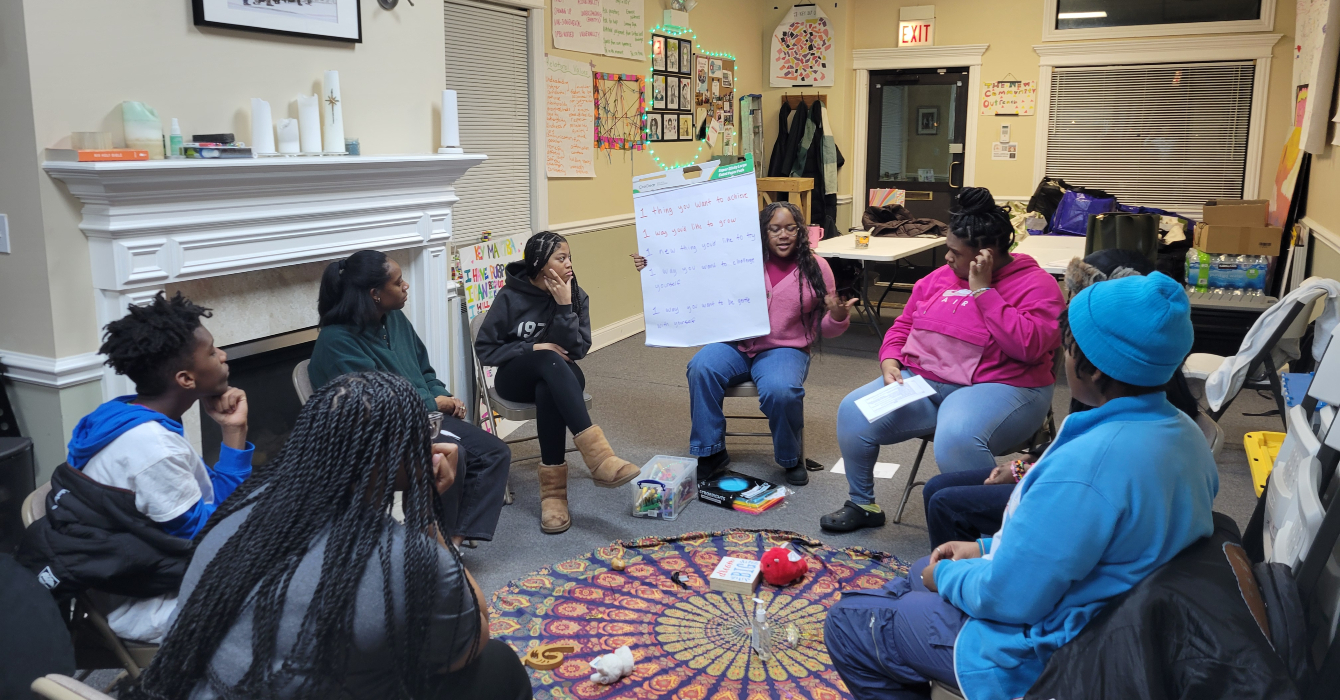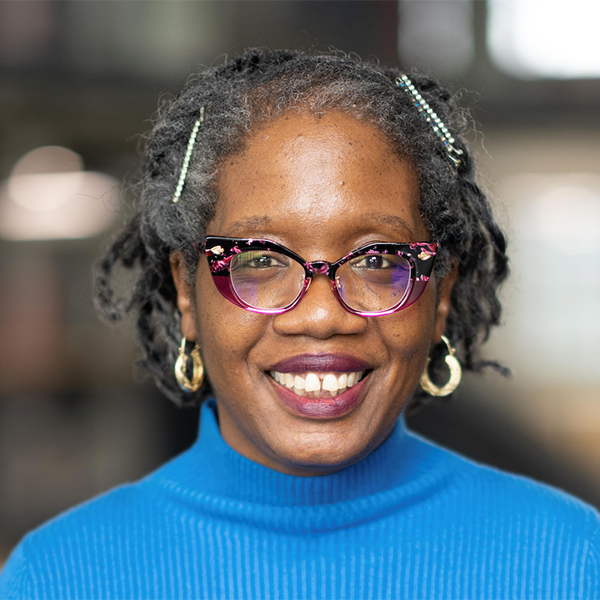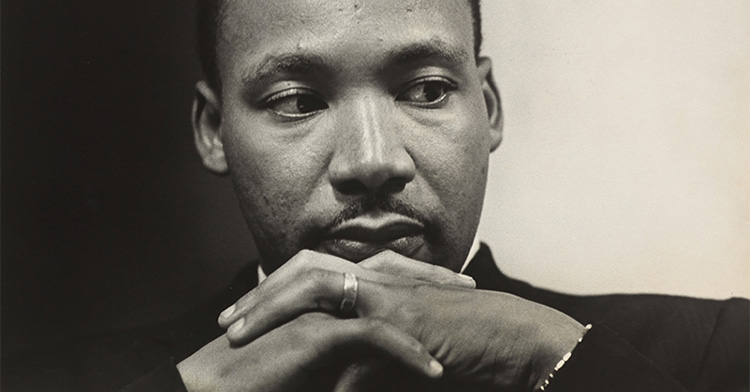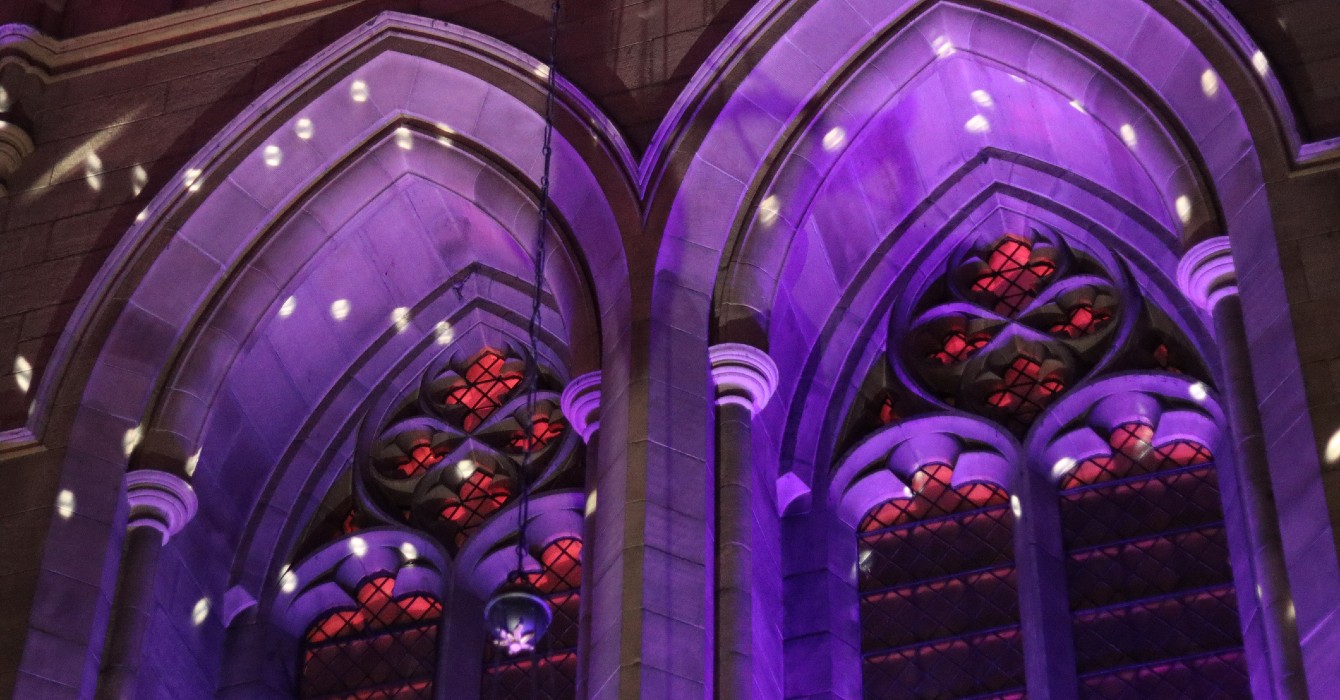One of the most important issues facing the church in the United States today is the challenge of pluralism, says Gerardo Marti, a sociologist who has studied and written about multiracial congregations.
“Will the church be able to equip itself to engage with pluralism?” asked Marti, the L. Richardson King Professor of Sociology and chair of sociology at Davidson College.
“One option is simply to cut ourselves off and to create a sense of refuge among people we assume are our own,” Marti said. “That explains some of the political dynamics that we see today. There are groups of people who still believe that we can and should become a Christian nation, [with a] Christianity that looks exactly like their own Christianity.”
Although it’s not yet clear, he said, what role churches will play in the lives of young people in the future, research suggests that younger generations are more likely to have a broader understanding of Christianity and a greater willingness to engage differences.
Marti said he admired the work that pastors and ministry leaders are doing “to craft a church that can bear the future.”
“The church will continue,” he said. “For us, it’s really about how we’re serving the breadth of people, especially people that we do not currently see -- people who are not right in front of us.”
 Marti’s scholarly work is focused on race-ethnicity, religion, identity and social change. His books include “A Mosaic of Believers: Diversity and Innovation in a Multiethnic Church,” “Hollywood Faith: Holiness, Prosperity, and Ambition in a Los Angeles Church” and “Worship Across the Racial Divide: Religious Music and the Multiracial Congregation,” which was recently rereleased in paperback by Oxford University Press.
Marti’s scholarly work is focused on race-ethnicity, religion, identity and social change. His books include “A Mosaic of Believers: Diversity and Innovation in a Multiethnic Church,” “Hollywood Faith: Holiness, Prosperity, and Ambition in a Los Angeles Church” and “Worship Across the Racial Divide: Religious Music and the Multiracial Congregation,” which was recently rereleased in paperback by Oxford University Press.
Marti has a B.A. in communications and sociology from Pepperdine University and an M.A. and a Ph.D. in sociology from the University of Southern California.
He spoke recently with Faith & Leadership about his research and the impact of current U.S. politics on multiracial worship. The following is an edited transcript.
Q: Tell us about your work. Your faculty webpage says you’re a sociologist focused on race-ethnicity, religion, identity and social change.
I’ve always been intrigued by how people work, act and think, and how that relates to broader patterns of social change. Eventually, I grew into being an ethnographer focusing on religion, race and social change.
I found congregations to be a very strategic place for studying social change. All my work has to do with understanding social change, with much of that work focused on congregational life.
Q: You’ve studied and written a lot about multiracial worship, including the role of music in multiracial worship. Tell us about that.
In the late 1990s, some churches, white-dominant churches -- churches established, attended and led by whites -- began to realize just how homogeneous they were.
They realized that schools, workplaces, even the local grocery store were more diverse than they were. And they started to ask deep questions: “Does prejudice lie at the heart of our churches? Are there limits to the love that we’re willing to extend to our neighbor?”
That prompted a great deal of speculation about how to become more diverse. It quickly became a search for strategies and solutions, and the few churches that had some diversity -- again, usually predominately white -- became the most influential at providing formulas for how to diversify church life. A stream of talks, workshops, conferences and books came out asserting what they felt were the answers to creating greater racial and ethnic diversity in congregations.
Q: And as you note in “Worship Across the Racial Divide,” it wasn’t quite as easy as, “Here are five tips to have a multiracial congregation.”
Yes. Unfortunately, the search for solutions led people to focus on stereotypes, and on essentializing the cultures of different racial and ethnic groups, and then suggesting that churches needed to align themselves with those different cultural preferences. They were sort of asking, “What are different racial and ethnic groups like? And therefore what do we need to do to make them feel welcome?”
Q: So basically, white churches were saying, “We need to be more X or Y; we need to be more black or Asian or whatever”?
Absolutely. In fact, that’s a direct quote from a worship leader I spoke to, whose pastor told him, “We need to become blacker.”
But that creates a scramble: “We don’t have black people here. What are black people like? What do we think they should have? How many black people can we get in here, and how quickly?”
Most strategies were about restructuring worship, because very few other things can be changed deliberately. You can’t change your neighborhood or people’s attitudes overnight. So people focused on what they could change in the service, especially music.
Worship pastors became the ones most responsible for diversifying the congregation. If music was the answer, then they had to make sure that their churches showed diversity on the platform and encouraged musical diversity.
Q: But it wasn’t like, “Here’s a playlist you should use.” You found it was as much about the practice of music as a particular type of music.
Yes. In my research, I visited a range of churches -- from Pentecostal and charismatic to highly liturgical mainline congregations -- that were already diverse, at least 20 percent nonmajority.
What’s fascinating is that the leaders of churches that are already diverse don’t necessarily understand how they got there. They have stories and legends, but there was a range of how intentional diversity was as a goal for their worship.
Some churches believe you have to be highly intentional and have a great deal of musical diversity to appeal to people from different racial and ethnic groups. In a sense, they have music for blacks, music for Latinos, music for white people -- almost like turn taking -- all within 15 or 20 minutes.
But that is difficult to do. It’s difficult to play any single style of music, let alone be able to do multiple styles in a short period.
At the other extreme are churches that do not strive for diversity at all and don’t have multiple versions of music. In fact, they were confused when I asked about their music. They see it as just worship music. It’s music that they do, and it works.
And perhaps most interesting, there are those who believe that racial diversity matters, but they have decided that one particular style, whether gospel or rock or something else, resonates with all racial and ethnic groups.
So you have these radical contradictions and disagreements about what the solution is for touching people’s lives and attracting them. Yet all of these churches successfully diversified.
Q: So what do churches do?
I found two things that became important. One, all the churches I spent time with had a profound conviction that African-Americans were the superior worshippers of all racial and ethnic types. For some, the only strategy they had was to hire a black worship leader. The assumption is that the black worship leader becomes a visible point of diversity, a conspicuous diverse presence.
The strategy for these churches was to show diversity on the platform. In all the churches, the diversity on the platform was greater than diversity in the congregation. Conspicuous and visible color was a central strategy, even if they didn’t always recognize that they were doing that.
The second thing that was important was the experience of being in the choir. People loved being in the choir.
Because musical work requires practice and meeting together, they become enmeshed in a small and caring group -- people who know their names, who keep in touch.
People are much more connected with their musical ministry group than with other aspects of the congregation. It draws them together, and in that context, color, race, ethnicity start to matter less.
Q: So to some extent, have any kind of music you want. The fact that you have diverse people doing music together is what changes a congregation.
That’s right. The style of the music wasn’t the motivator for people to come to a church, and it wasn’t what kept them there. It is the practice of music that is more important than the singing or hearing of music.
Q: It’s been more than 60 years since Dr. King pointed out that 11 a.m. Sunday is the most segregated hour in America. Why aren’t we further along?
That’s a challenging question. There is some good news. Diversity has gone up. Larger churches seem to have more capacity for diversity, because they can allow for different kinds of activities and ministries that allow different kinds of people to connect. They have some advantage at being able to draw a greater range of people into a ministry.
But diversifying a church is difficult. Ministry today is challenging. Leaders have to be attentive to so many different issues.
Diversity is usually nonurgent, and it’s not a goal that every person in a congregation believes is important. In fact, it’s very possible that church leaders who begin talking about diversity and race will create more conflict in their churches than they will a sense that, “I’m so glad we’re doing this.”
Q: What is the impact of the current political environment on multiracial worship? After Charlottesville and Black Lives Matter and Donald Trump’s election, is diversity more or less difficult, more or less likely, for a congregation to achieve?
Scholars are finding, in the case of evangelicals, that nonwhite evangelicals are far more sympathetic to diversity issues than white evangelicals.
Also, some white evangelicals now believe that they are the ones being discriminated against and stigmatized. Research shows that the sense of persecution among white evangelicals is very significant. And once that takes root, there’s no sympathy for being more attentive to the life experiences of people who are not white.
Many whites, particularly conservative whites, tend to minimize the difficulties or prejudices that blacks or other minorities face in the United States. White evangelicals tend to believe that America offers equal opportunity to everyone, and that if you cannot succeed, it’s because of a character flaw.
Their solutions tend to be based on individuals. But the research for many years shows that larger, systemic, hard-to-see, nonobvious structures hinder advances in wealth, opportunity, education and even health among nonwhites.
Many white evangelicals, white Christians, simply do not know American history. They are unaware of the depth of what enslavement did to blacks; they’re unaware of the Treaty of Guadalupe [Hidalgo], which annexed part of Mexico into America overnight, and how Mexican-Americans have been impacted by that; and they are unaware of how policies from Reconstruction through the New Deal may have helped poor whites but not poor blacks and other minorities.
Most Americans -- not just white Christians -- underestimate the power of long-term attitudes and societal structures both to enforce segregation and to do little to minimize the continued adverse effects among these huge populations.
Research has shown that many white congregations believe that they are not political -- you know, “We don’t talk about politics here.”
I think that what they may mean is that they avoid trying to be partisan. But it is naive to believe that they are not political.
Even in the informal things that people do -- like supporting a crisis pregnancy center and the way that’s talked about or how they discuss gender or what crisis ministry looks like -- these things all hint at a conservative political agenda that has been consistent for many years.
We know by historical research that conservative politics left the attempt to correct racial issues a long time ago. Republicans explicitly said that they were no longer going to be concerned about race as early as the turn of the 20th century.
History shows that much of our Christianity has been intertwined with racial attitudes, and the disentanglement is incredibly uncomfortable. We’ve just assumed that’s what Christianity is.
But it is a Christianity infused with support or disdain for different kinds of attitudes. It’s rooted in theologies that were crafted during the times of slavery. It’s also rooted in anti-Communism by white Christians throughout the 20th century, when many groups that supported racially progressive legislation were seen as being socialist and/or outright communist.
Q: How will generational differences play out in multiracial worship? Will young people be more interested in multiracial and multiethnic worship?
The older you are, the more likely you are to be in a congregation and to be active in that congregation. So when we talk about younger people, the first question is, to what extent will congregations be central to the lives of younger white Christians?
We’re starting to see a willingness of young people to be a part of less-formal, differently organized groups that are not what we would expect as a church. Many organizations and denominations are experimenting with church, and some people are rejecting our stereotypical sense of what church should be.
But we don’t yet know what’s going to happen. We’ve tended to think that once people have kids and settle into a family, church becomes a more central aspect of their life, but that may not be our future.
In terms of race, the younger you are, the more likely that you have experienced diversity as normal. America is already nonwhite majority, and every year there’s more diversity among the youngest of our populations. School and work are much more likely to be diverse than the lives that my parents and grandparents had.
Young people, on average, have a more normalized experience with racial and ethnic diversity than their parents or grandparents did. They are also much more likely to encounter religious differences -- not just belief or nonbelief but also Mormons and Hindus and Muslims, and people from other countries. That experience of diversity provokes things.
So the challenge, for much of the church, will be the challenge of pluralism. Will the church be able to equip itself to engage with pluralism?
One option is simply to cut ourselves off and to create a sense of refuge among people we assume are our own. That explains some of the political dynamics that we see today. There are groups of people who still believe that we can and should become a Christian nation, [with a] Christianity that looks exactly like their own Christianity.
It’s a very particularistic sense of what Christianity means, and it has enough sway and enough power among enough people that it has political consequences.
But as we move into the future, the evidence shows that the younger we go, the less we see a particularistic definition of orthodoxy and a greater willingness to engage differences.
I admire the work that pastors and ministry leaders are doing to craft a church that can bear the future. The church will continue. For us, it’s really about how we’re serving the breadth of people, especially people that we do not currently see -- people who are not right in front of us.
The people right in front of us will always demand a great deal. The needs are infinite.
The challenge of the church is not mere survival; the challenge of the church is, how far will we extend our arms and look for and touch those who are not right in front of us?
The model for that, for me, is Luke 10 and the sending out of the 70 -- to really go out, not wait for people to come to us. But where are we going out?













